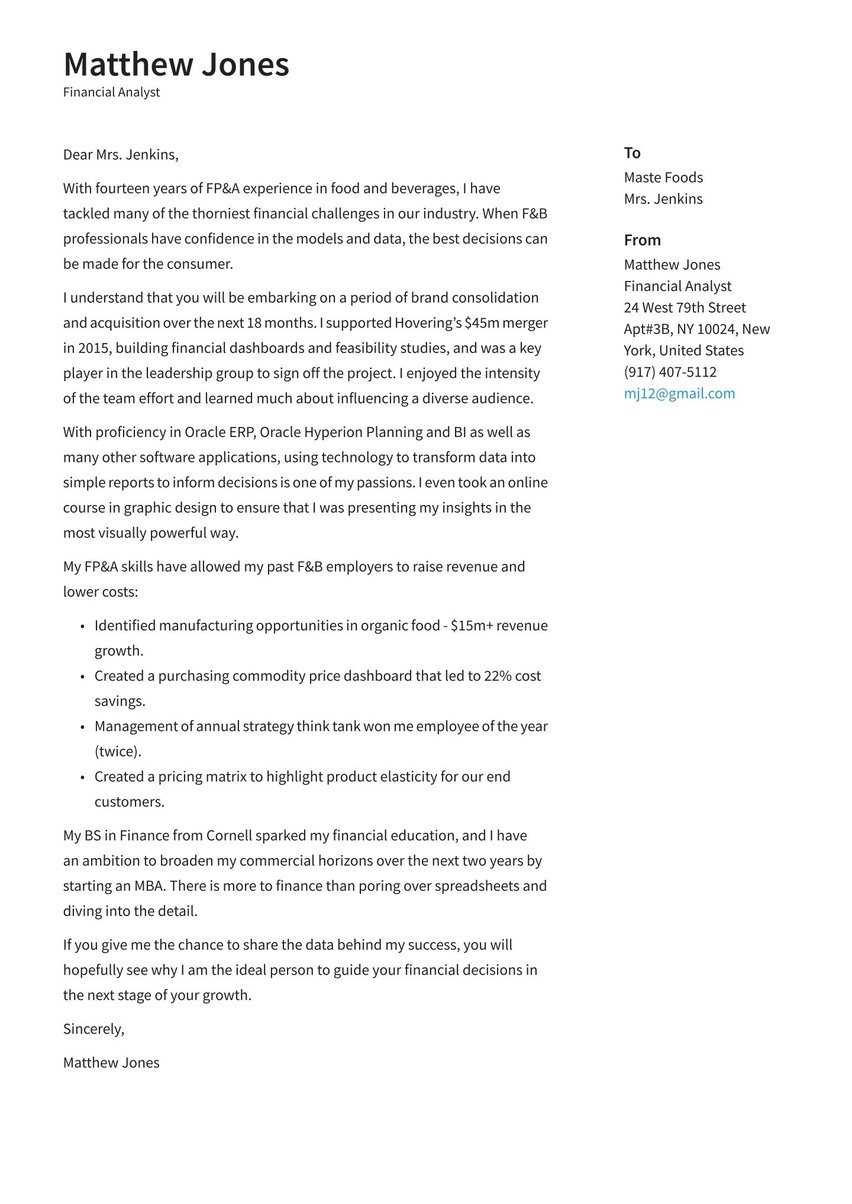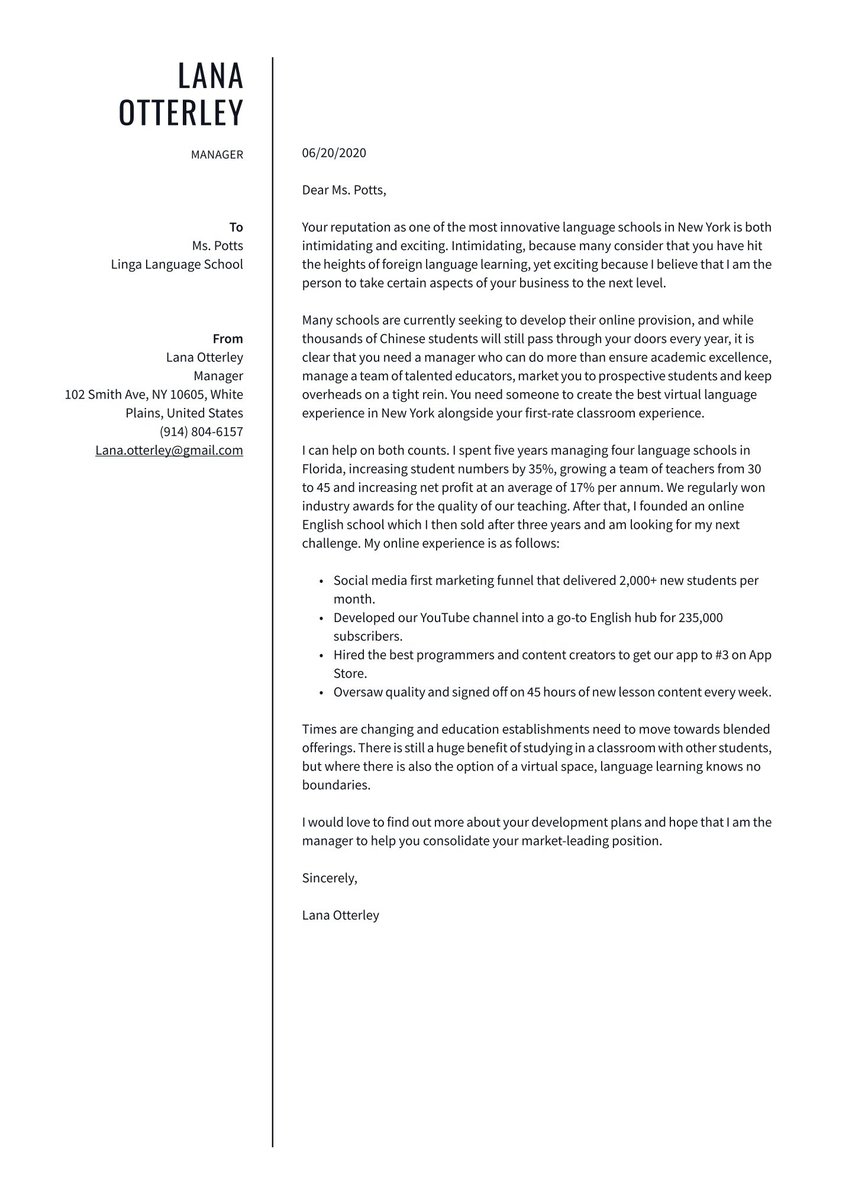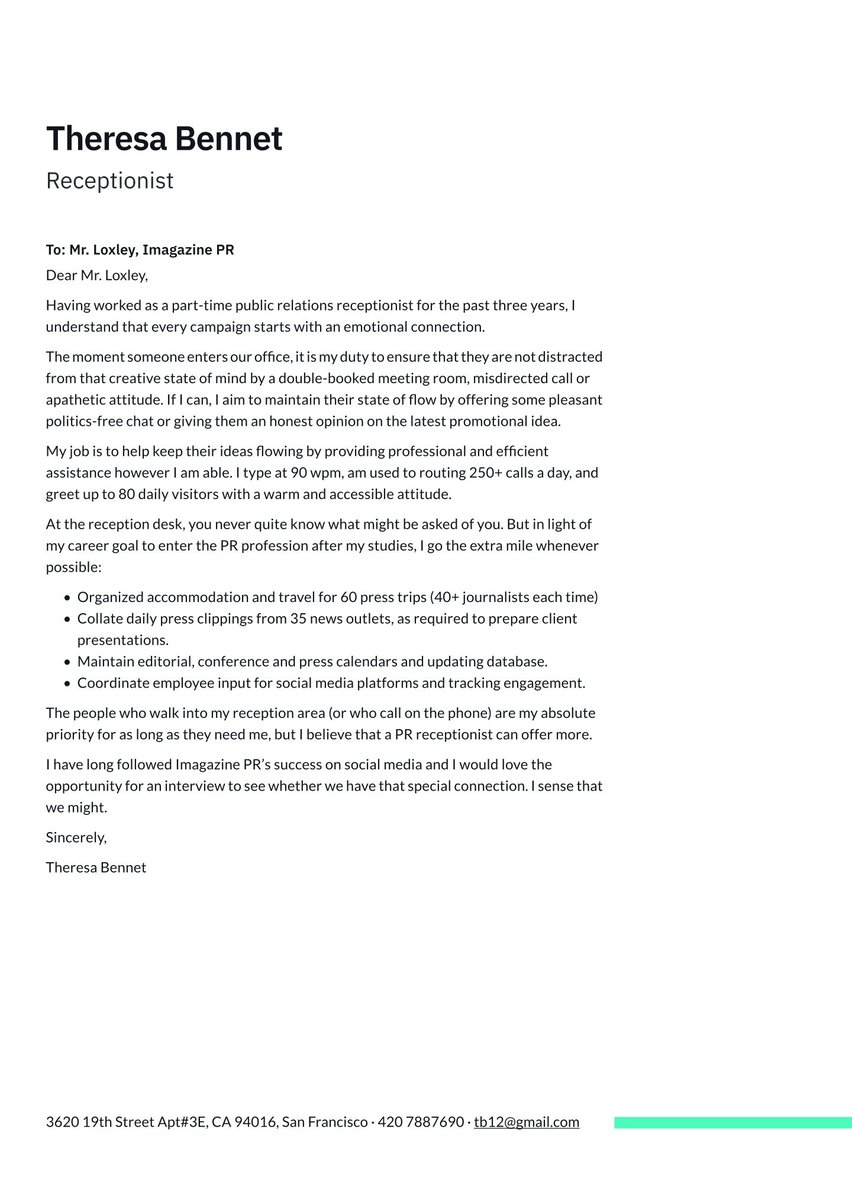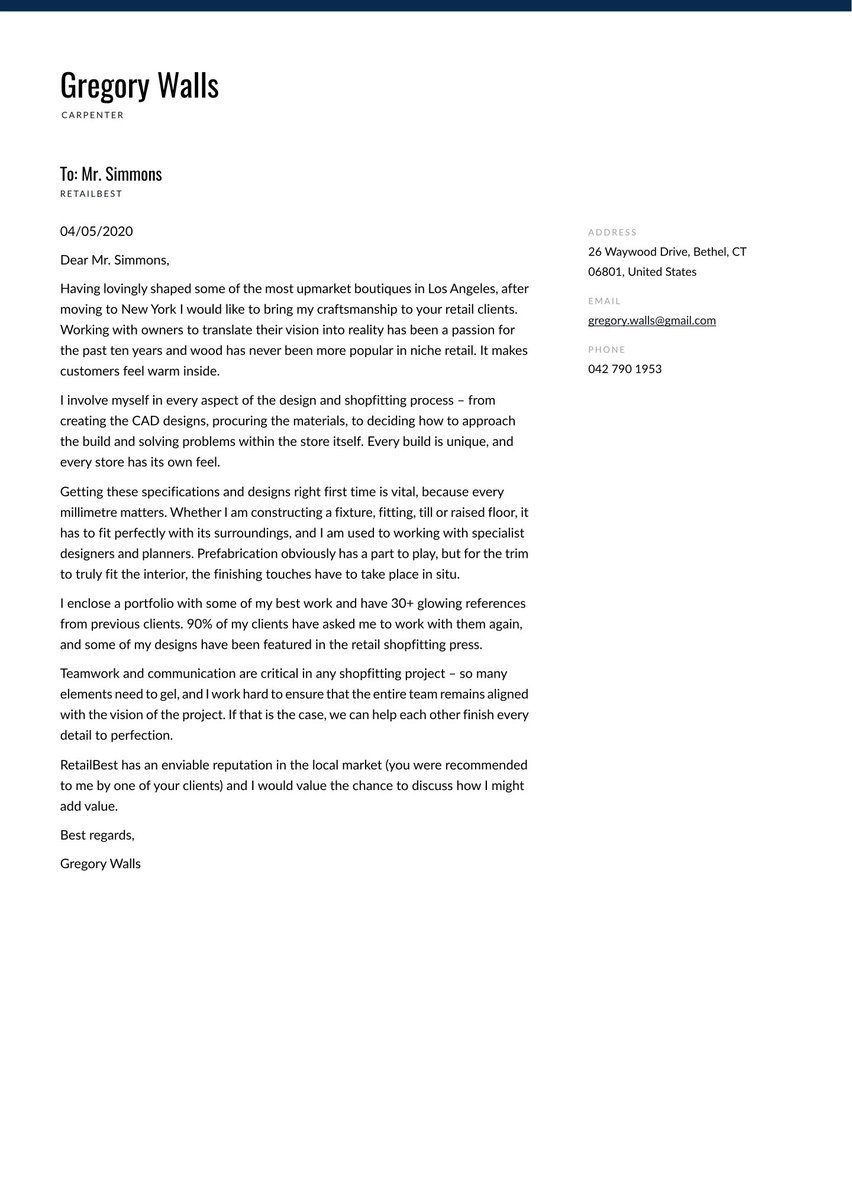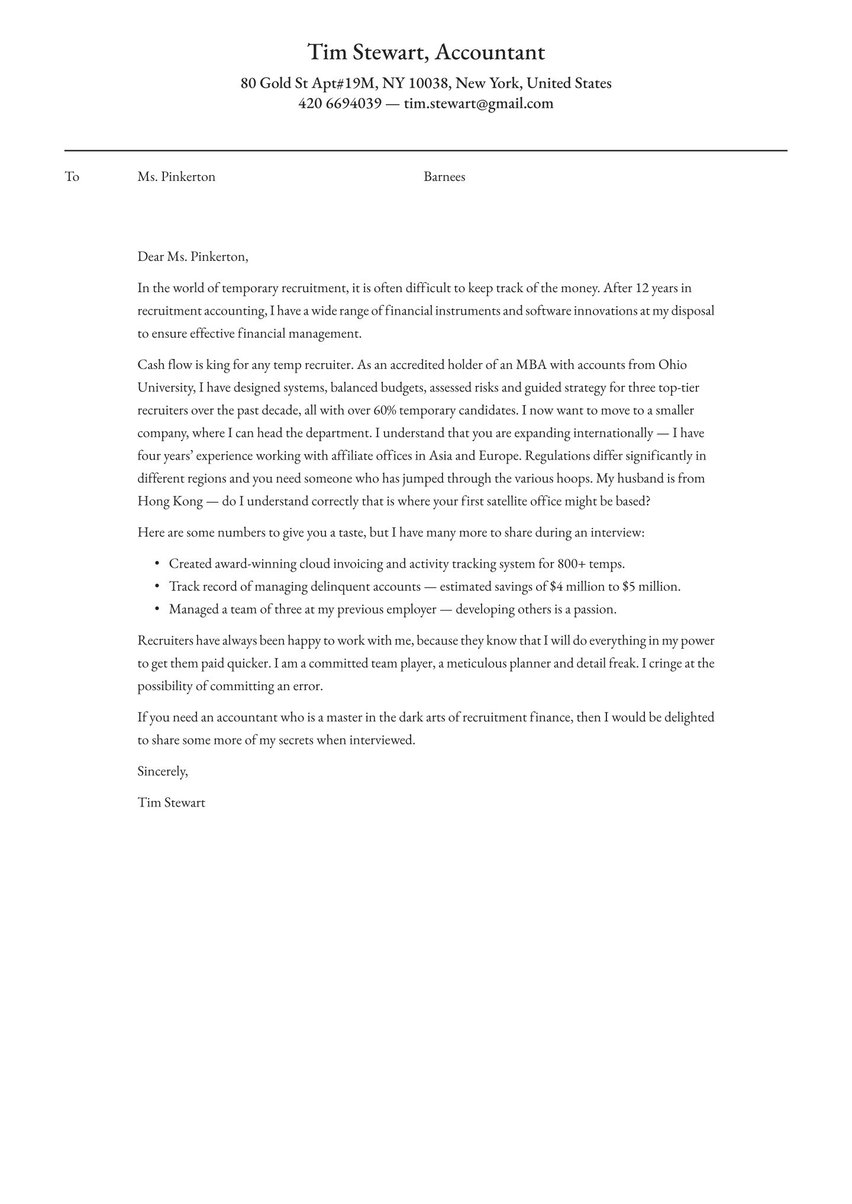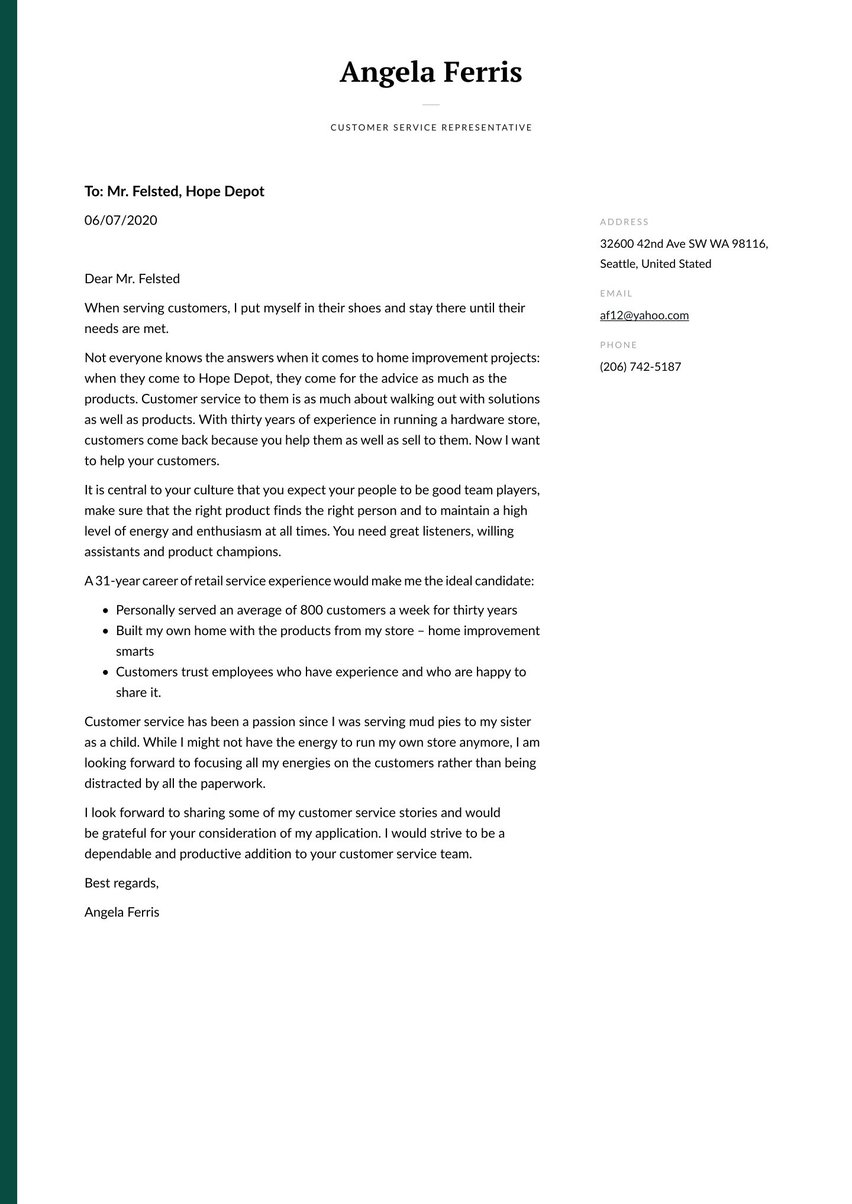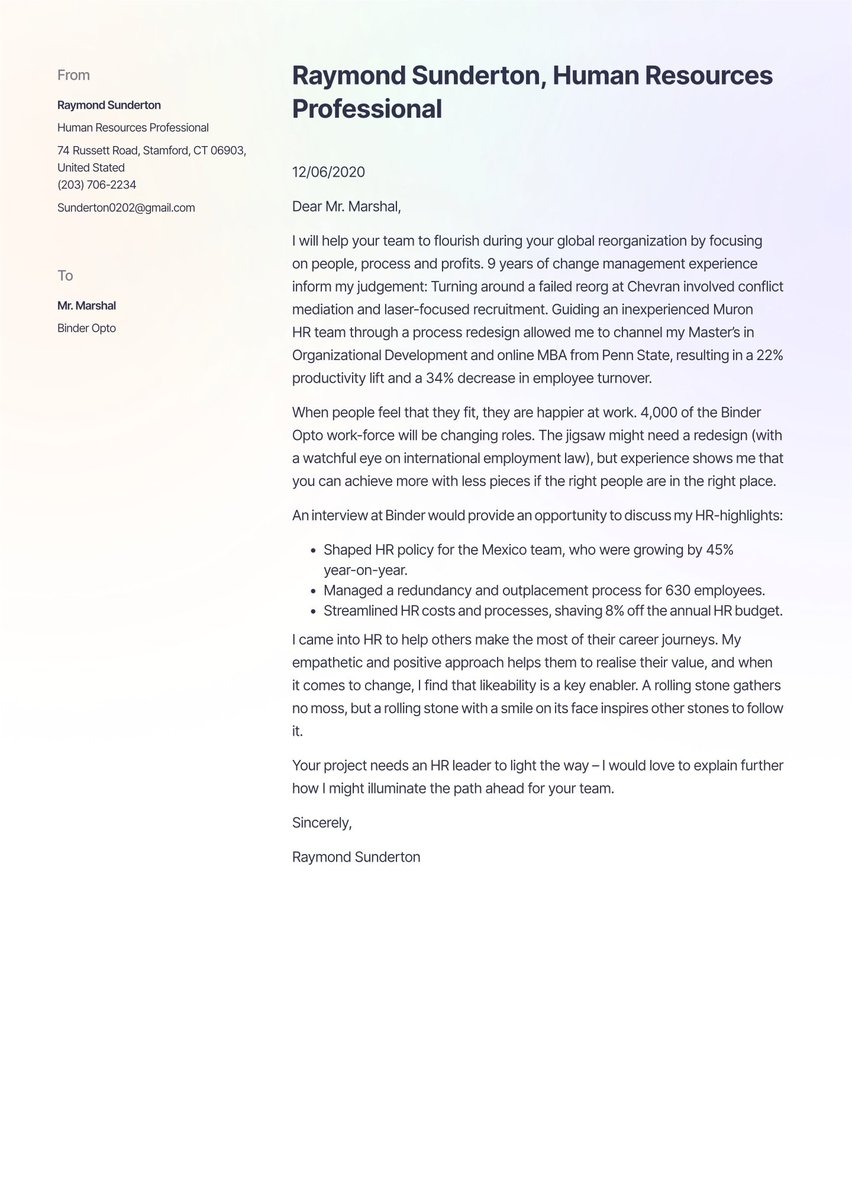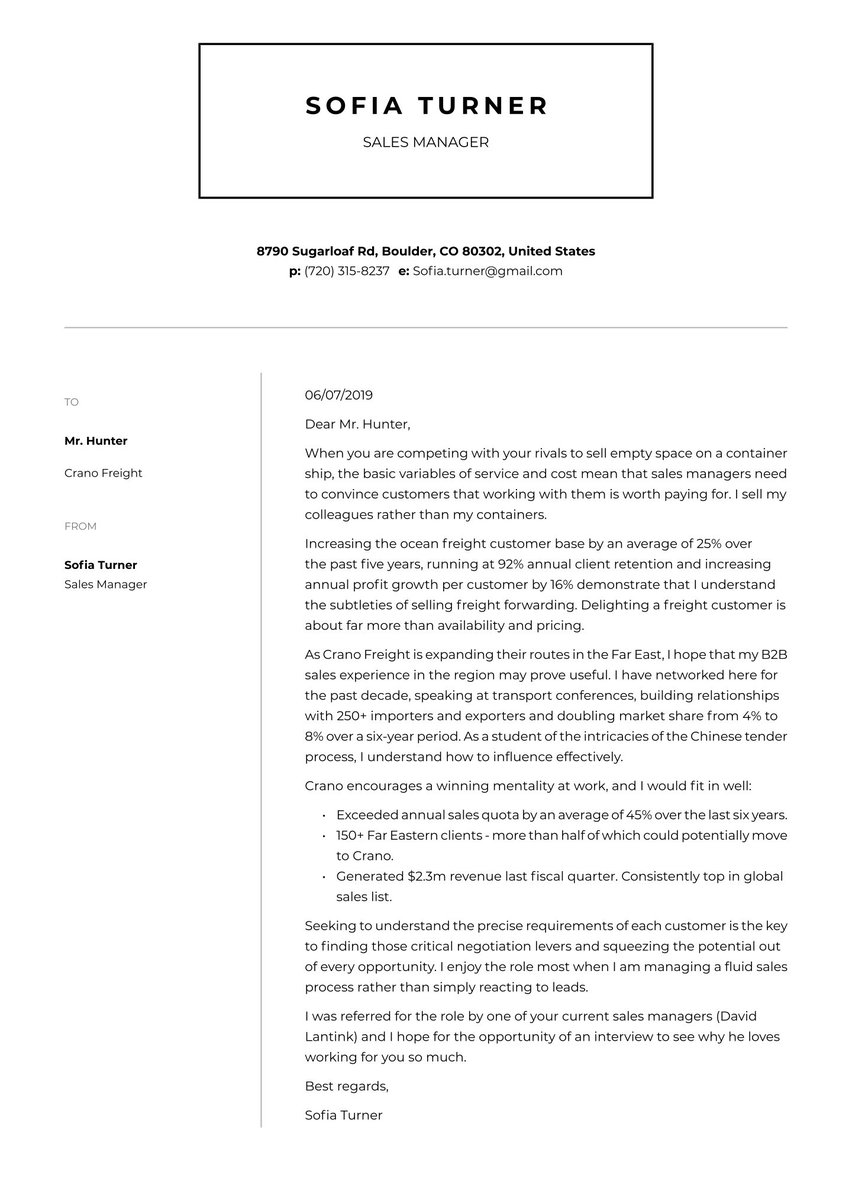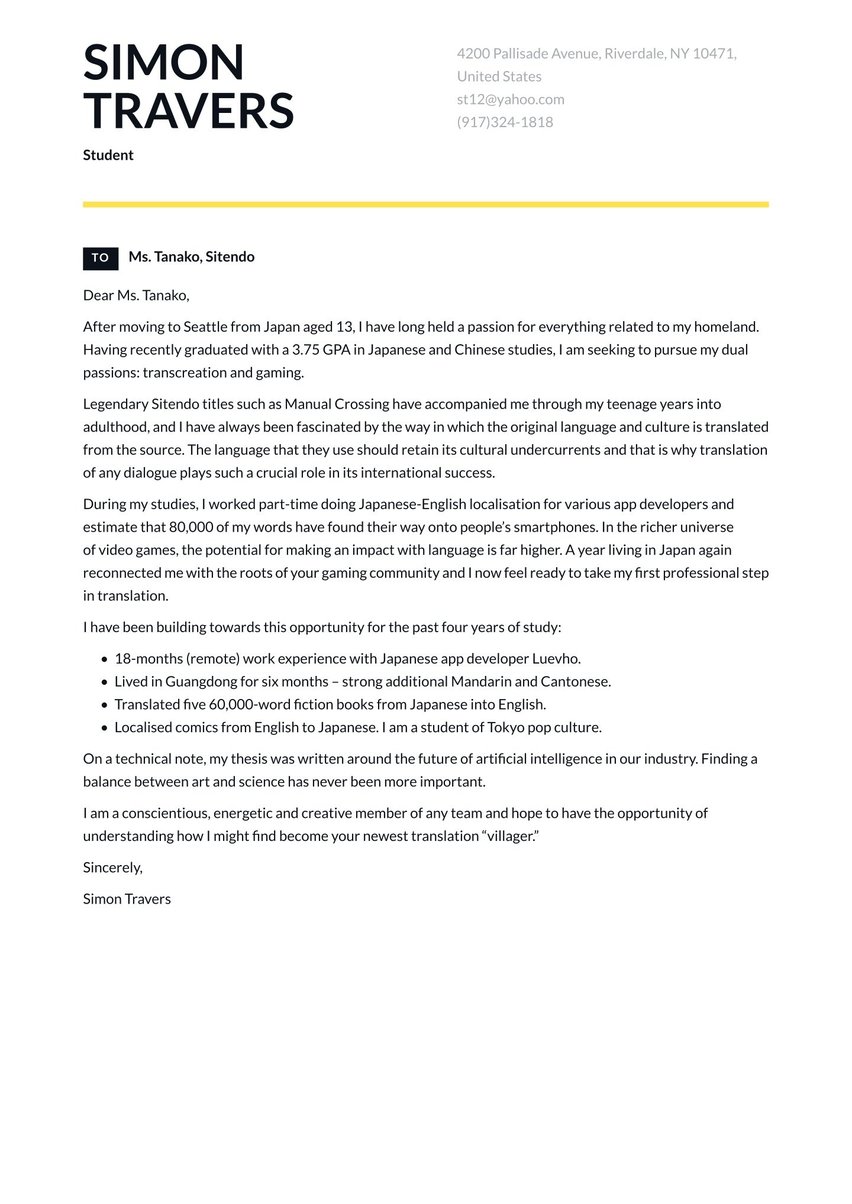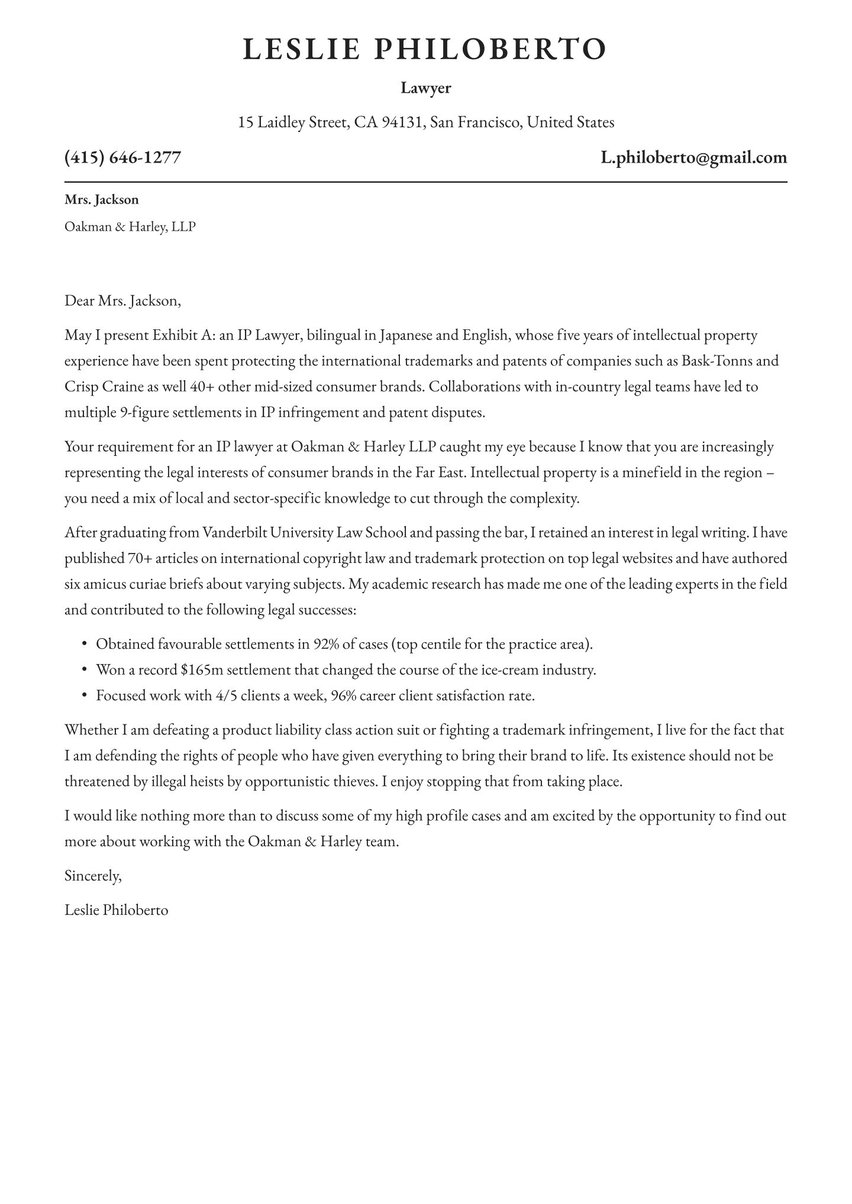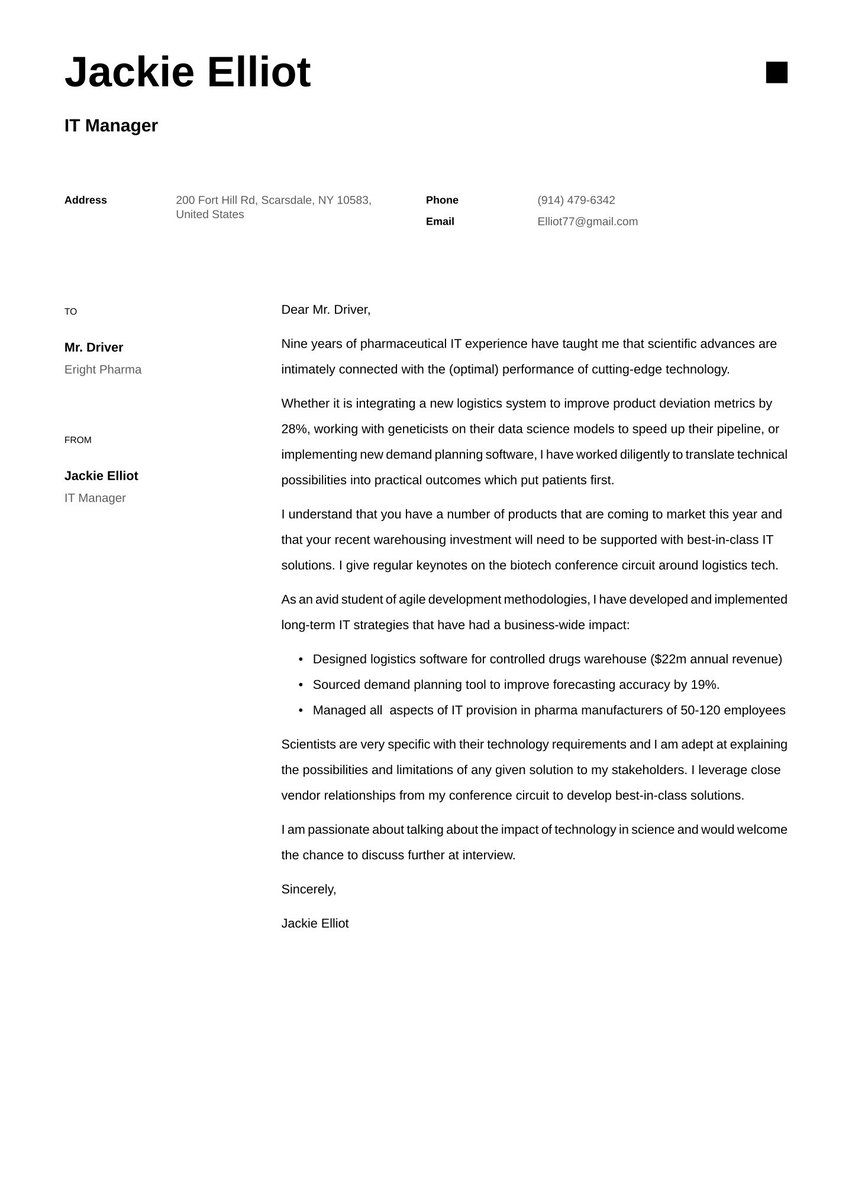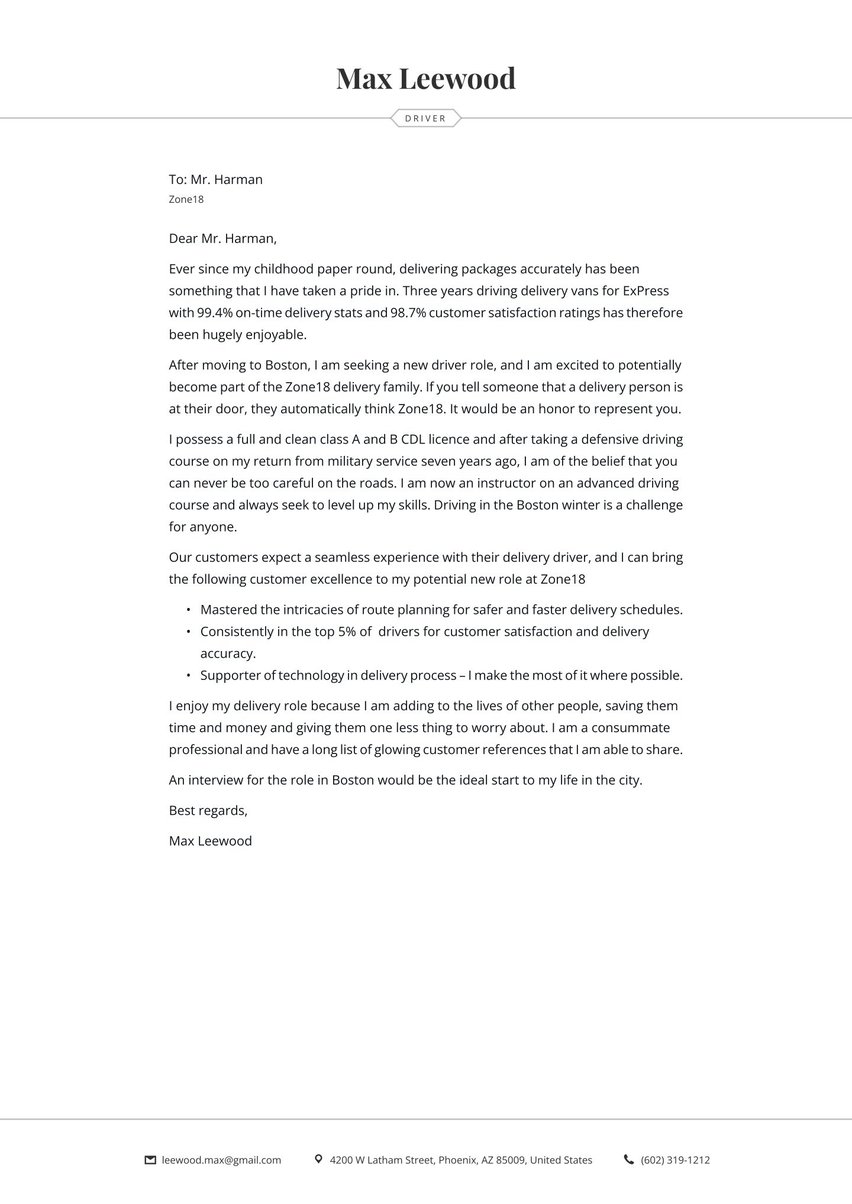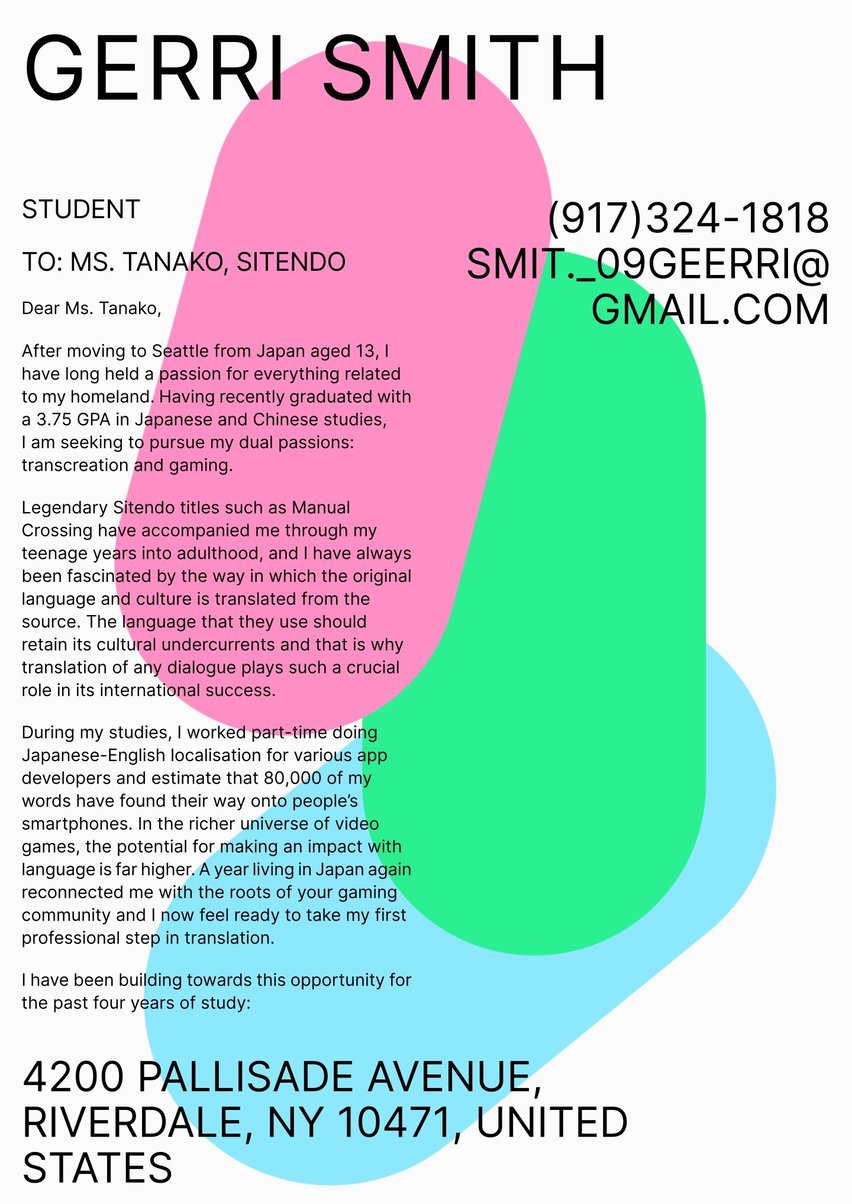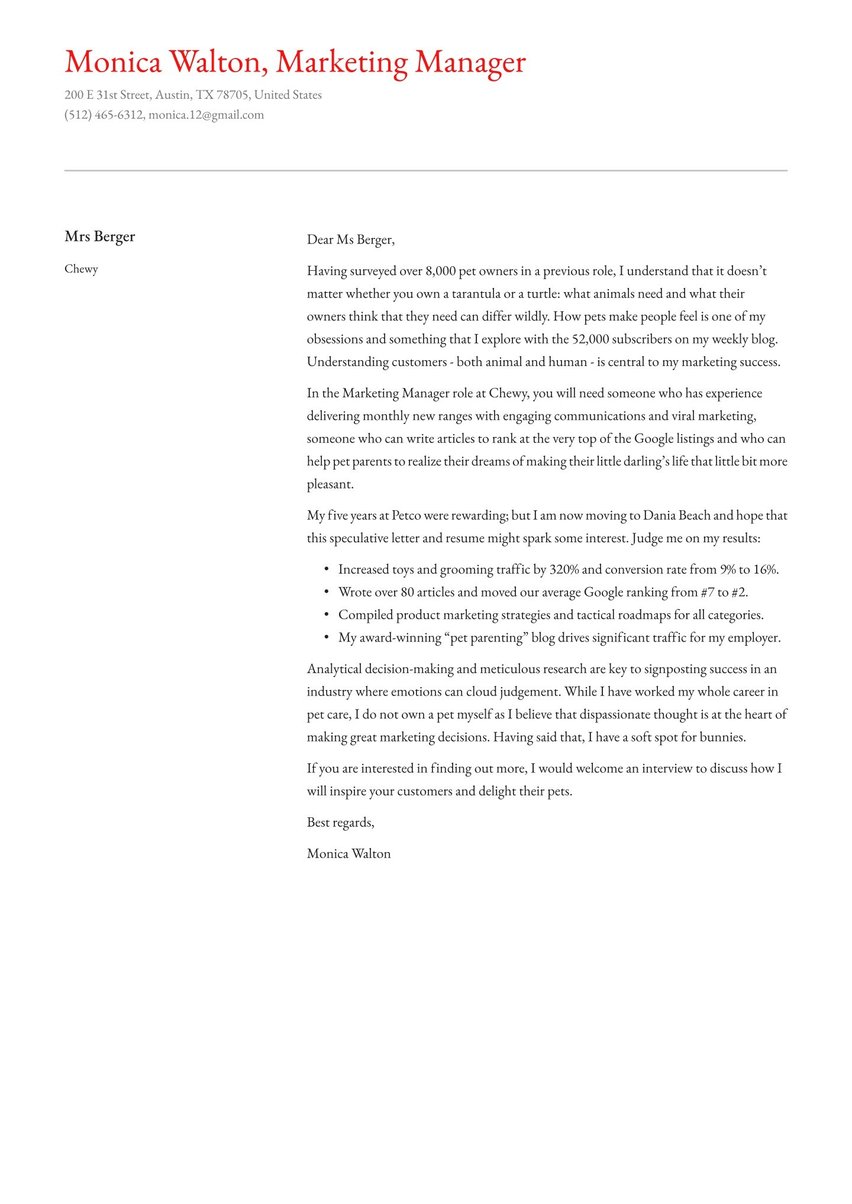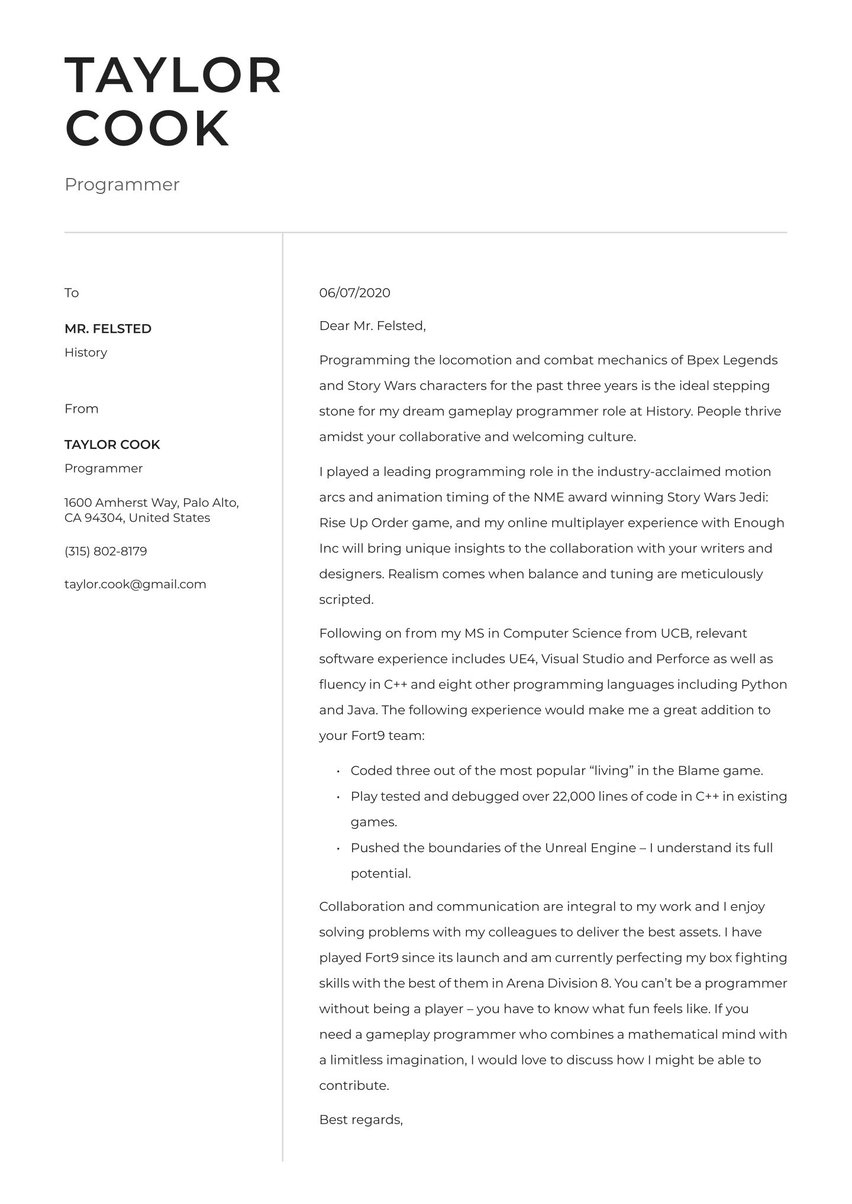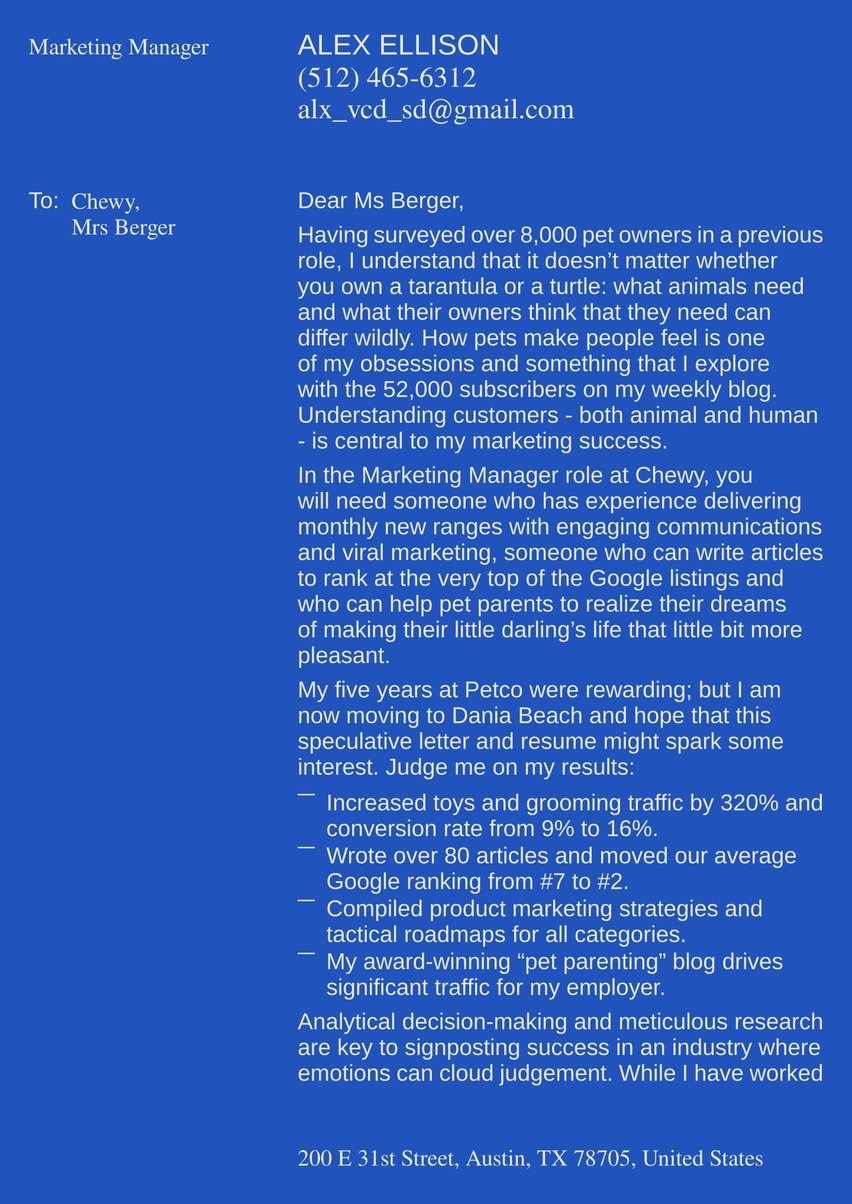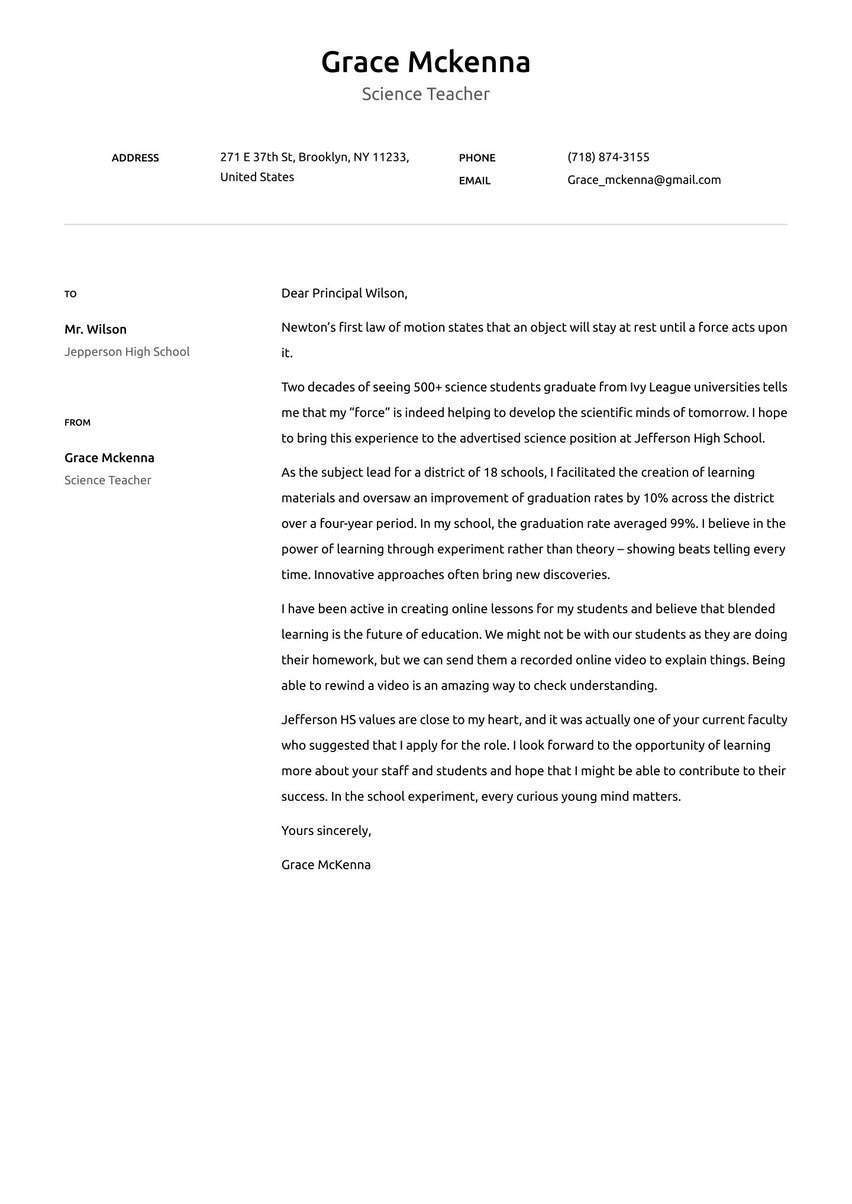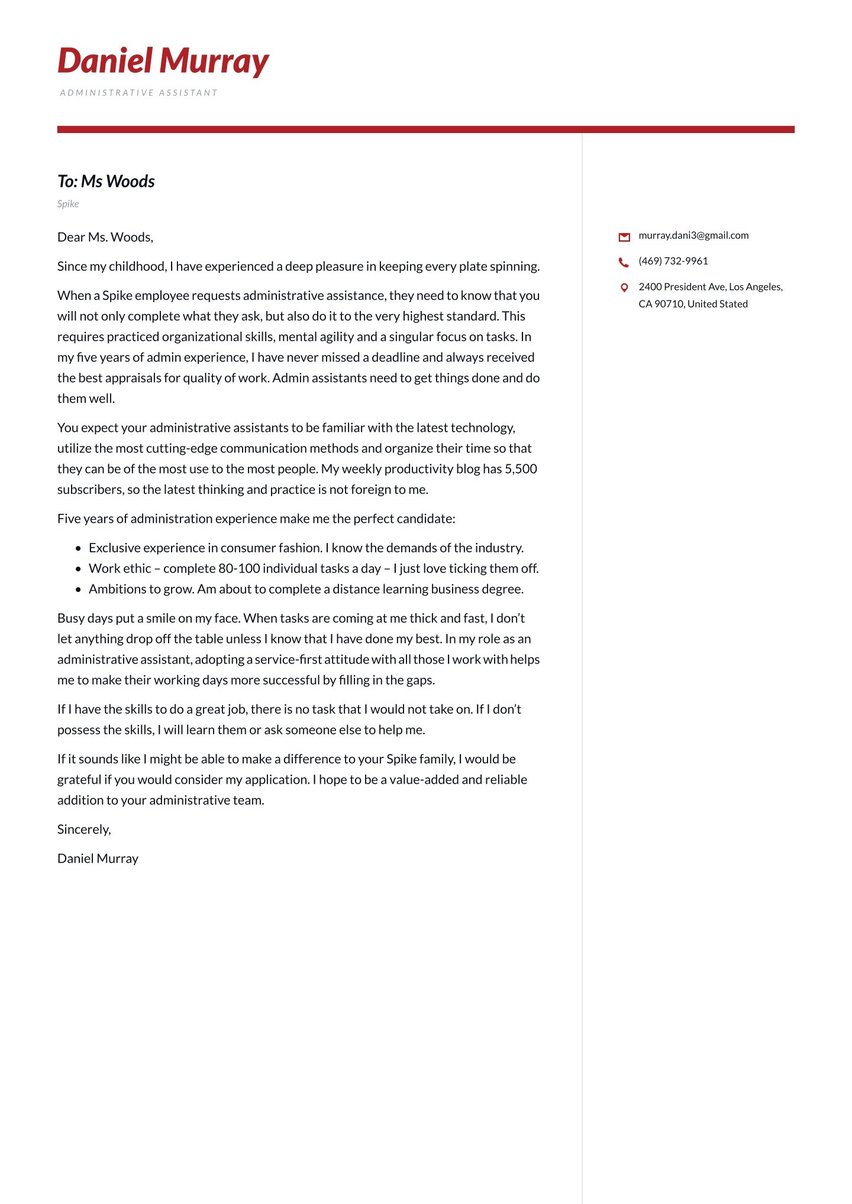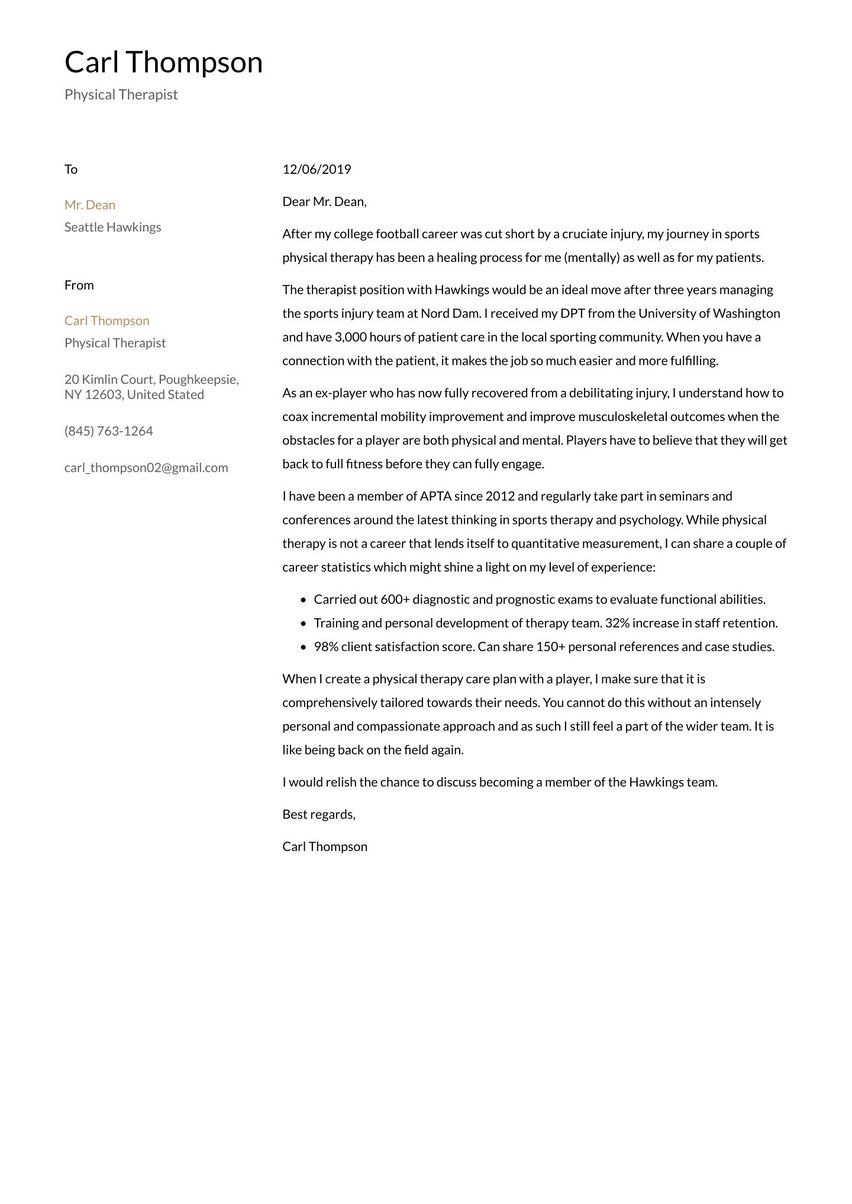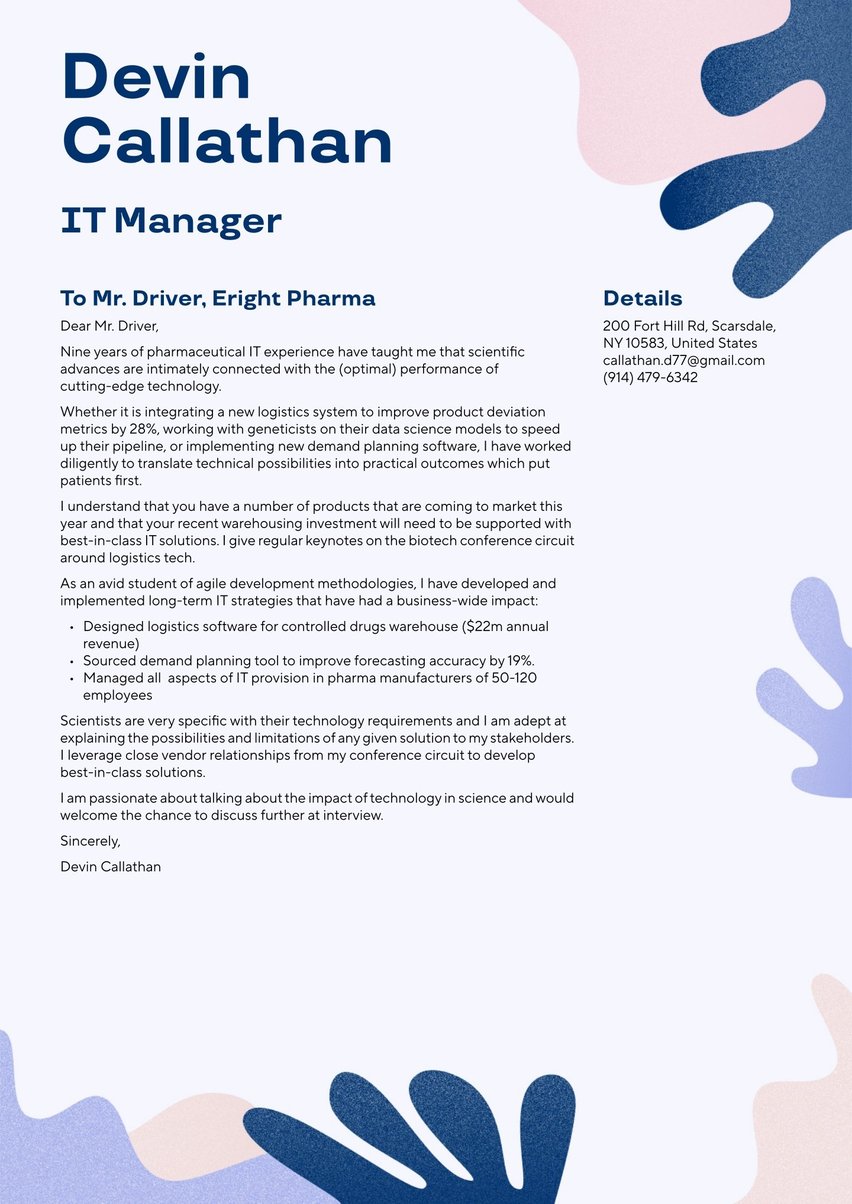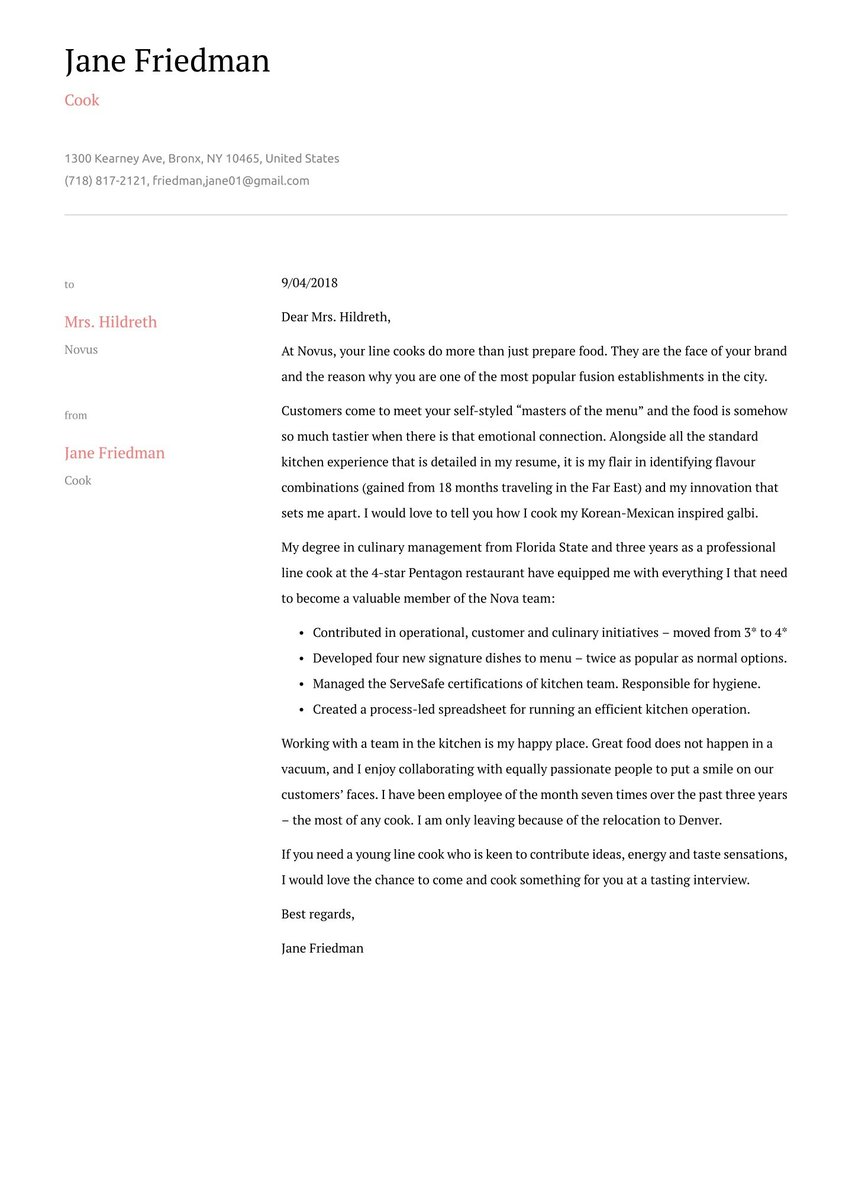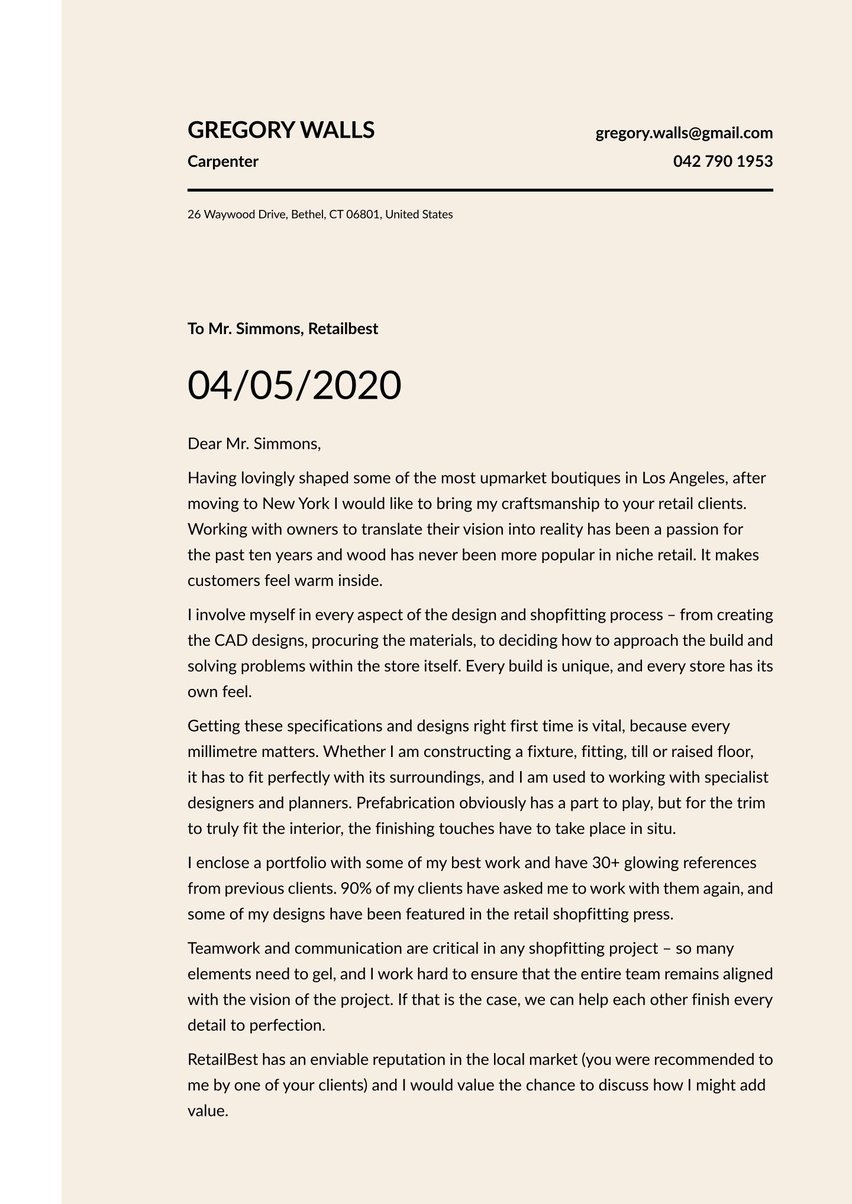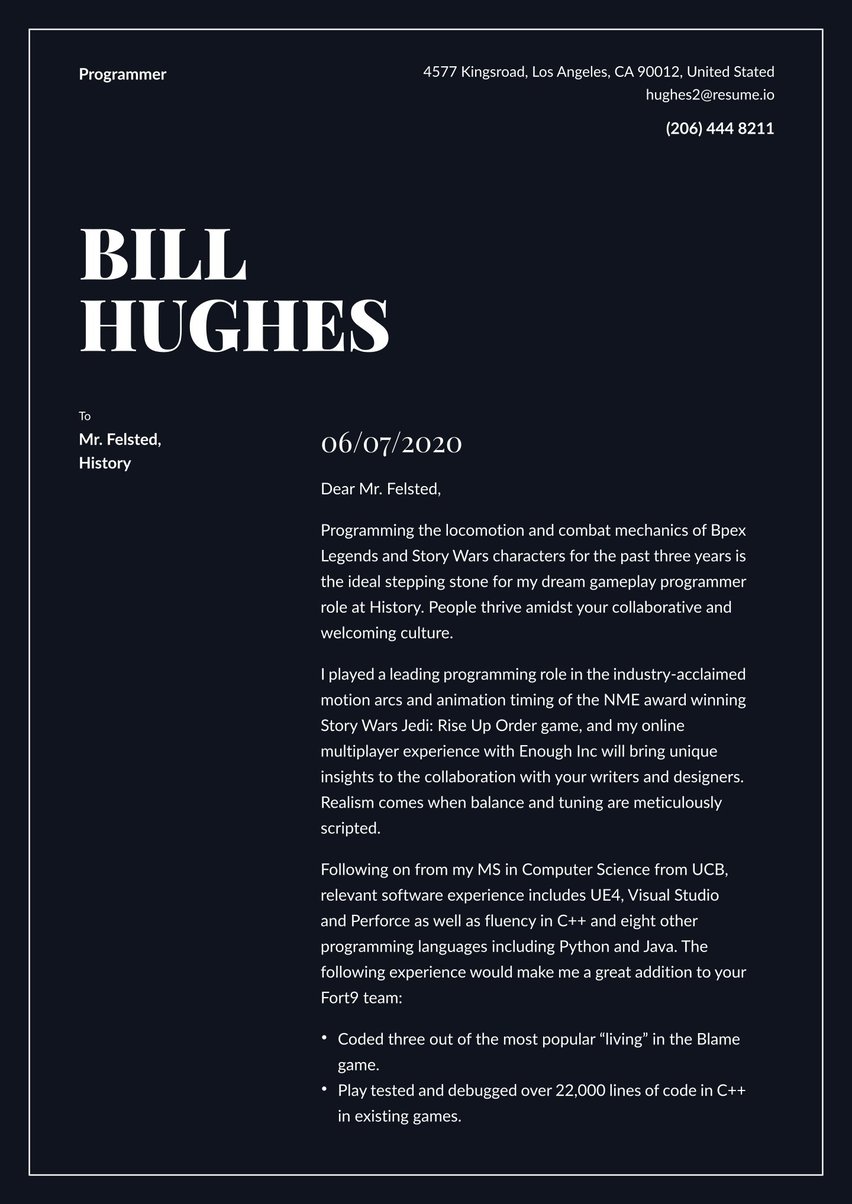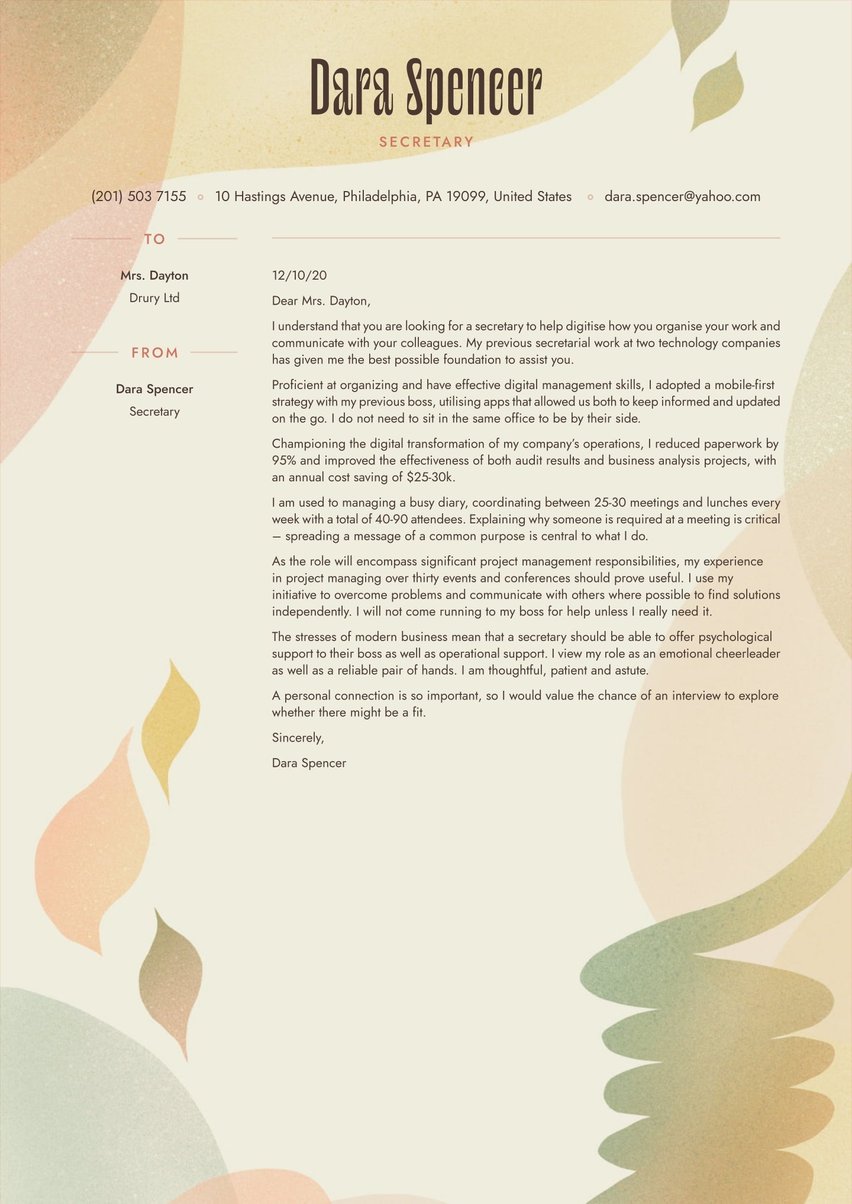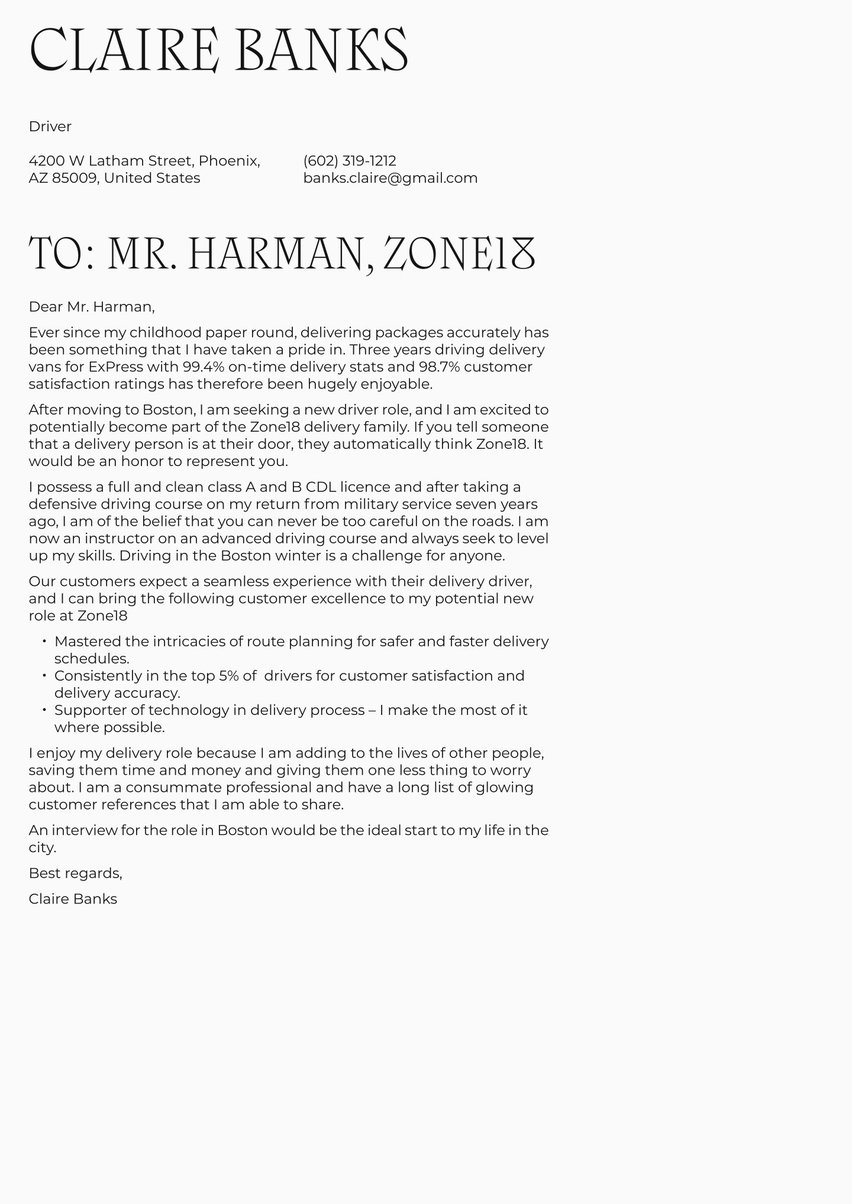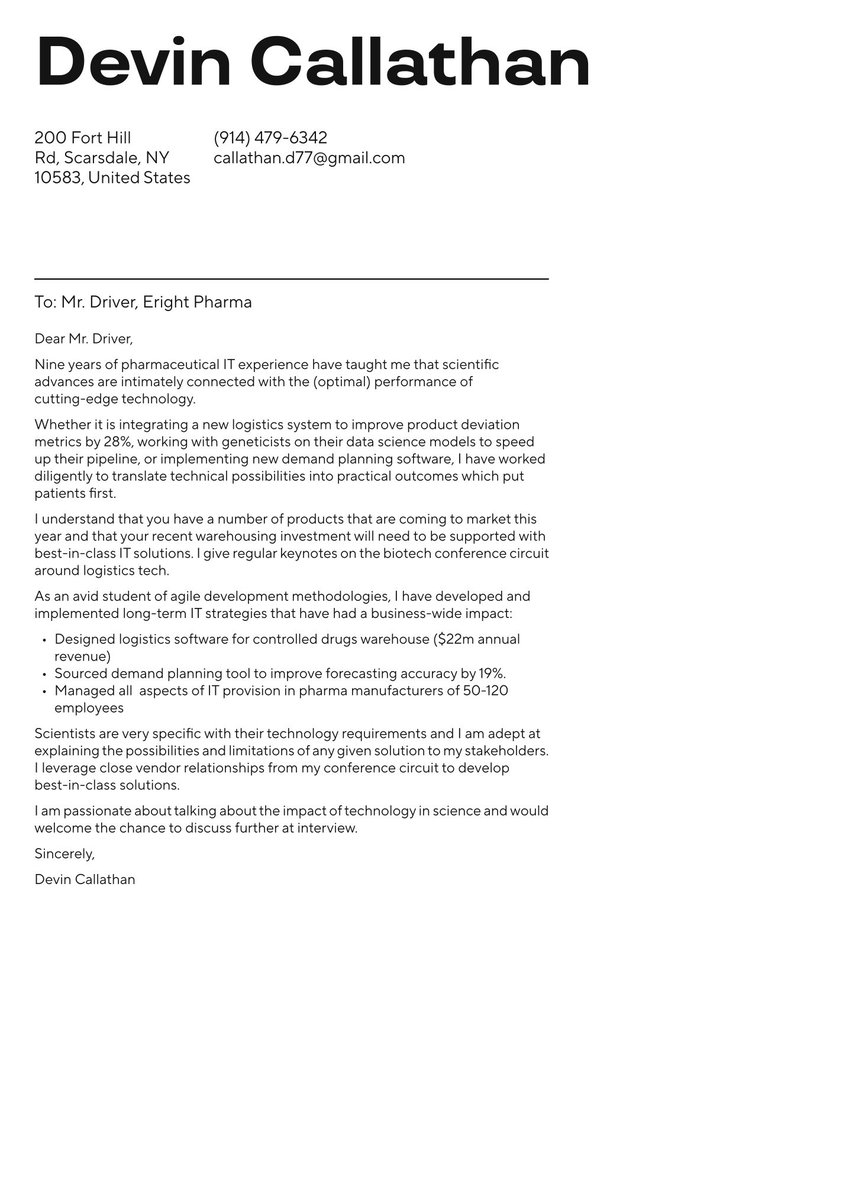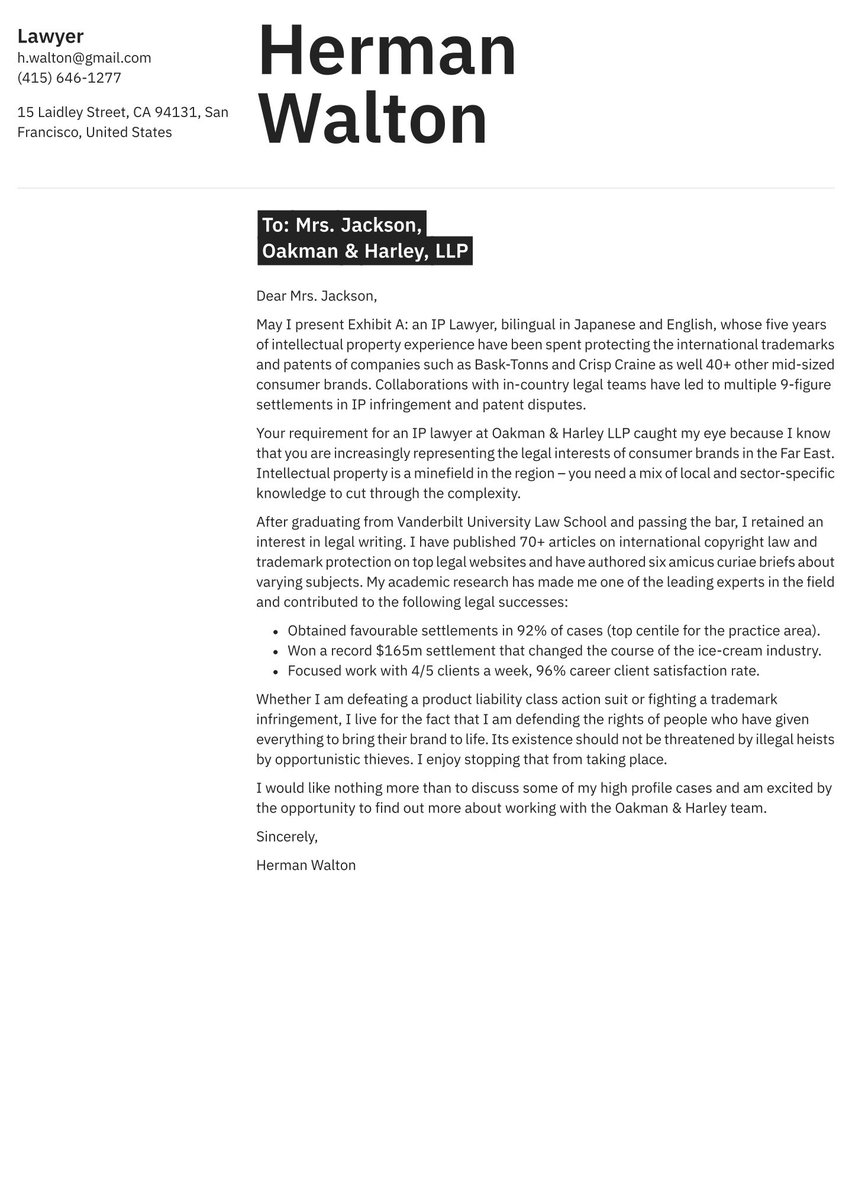Occupational therapy takes on a whole different meaning for professionals in that field pursuing a job change. From a more introspective angle than you take when helping others attain their everyday living goals, an occupational therapist cover letter is vitally important to your own career success. For that kind of help and support, Resume.io is the right place to turn.
Whether you are looking at the physical or mental suitability for a role, occupational therapists should be intimately tuned in to their clients. This focus can show through in a personality-led cover letter, whereas a resume is more factual and dry. Share the difference that you have made in your work.
As a leading provider of job-winning resources, we’ve created dozens of occupation-specific writing guides and free cover letter examples. Our experts also offer formatting advice, plus field-tested templates and builder tools to help you create the most common application documents.
This cover letter writing guide, along with an occupational therapist cover letter example, will discuss:
- The best format to make a cover letter sample attractive and friendly
- Optimal impact of each cover letter part: header, greeting, introduction, body and conclusion
- Writing psychology used in our occupational therapist cover letter example
- Common mistakes to avoid in a cover letter sample
According to the U.S. Bureau of Labor Statistics (BLS) the occupational therapy job market is expected to grow by 16% from 2019 to 2029, four times faster than the workforce average overall.
Best format for an occupational therapist cover letter
Now that you’re set to start writing your occupational therapist cover letter, there’s no need to feel overwhelmed. The basic structure and a few visual formatting tips will simplify the task.
Like any letter, it can be broken into parts, which we’ll guide you through one at a time. The sum of those parts will add up to an inviting-to-read “handshake” with your potential employer.
Following our advice for each section will ensure you say just enough without going overboard. Be strict about keeping your cover letter short — 300 to 400 words is perfect. The single-page rule takes into account a large enough font size, with generous enough margins and line spacing to be easy on the reader’s eyes and brain.
Step by step, we’ll be creating an occupational therapist cover letter with these components:
- Cover letter header
- Cover letter greeting / salutation
- Cover letter introduction
- Cover letter middle paragraphs (body)
- Cover letter closing (conclusion and sign-off).
Here is an adaptable cover letter example for an occupational therapist that you can customize for your own version, tailored to the position and employer:
Dear Mrs Tramting,
Working as an occupational therapist for the past seven years has taught me that in a small private practice for nearly a decade has taught me the value of an individual approach to every patient.
I have worked with the widest range of clients, presenting a range of disabilities as a result of stroke, muscular dystrophy, arthritis, cystic fibrosis and many other conditions. My OT practice has mainly been geared towards those working in physically demanding professions – helping people to regain remnants of their professional lives. This has been incredibly rewarding as they rediscover what they thought was lost forever.
Nine years of evidence-based treatments centred around the skilful application of therapies to ensure a maximal recovery and optimal use of new prosthetics, orthotics, and other devices. I am a recognised expert in delivering ambitious development plans (both for my patients and for others). Much of my therapy has been based around the following:
- Improving muscle strength and range of movement
- Improving the sense of balance and coordination
- Improvement in the scope of their daily activity
Much of an occupational therapist’s success is grounded in enabling a treatment path with achievable goals. Patients avoid the setbacks of failure when they take things step by step. My experience tells me what is possible and what is not. When you push too far, you take too many steps back and trust can suffer.
I would value the opportunity of an interview at your convenience and would love to talk you through how my skills might add to your practice.
Sincerely,
Jessica Stevens
For more inspiration, you can check out our related medical cover letter examples listed here below:
- Nursing Cover Letter Sample
- Medical Assistant Cover Letter Sample
- Caregiver Cover Letter Sample
- Physical Therapist Cover Letter Sample
- Doctor Cover Letter Sample
- Pharmacy Technician Cover Letter Sample
- Pharmacy Assistant Cover Letter Sample
- CNA Cover Letter Sample
- Healthcare Cover Letter Sample
- Medical Cover Letter Sample
- Physician Assistant Cover Letter Sample
- New Grad Registered Nurse Cover Letter Sample
- LPN (Licensed Practical Nurse) Cover Letter Sample
- Doctor Assistant Cover Letter Sample
Cover letter header
The header of your occupational therapist cover letter should be visually eye-pleasing, but not for the sake of decoration. On the contrary, its purpose is to attract, not distract, the reader’s attention for all the right reasons.
- A well-designed header leaves no room for doubt or confusion about who your cover letter belongs to. Your name, occupation and contact information are prominently displayed at the top, so anyone involved in the recruiting process – possibly including HR and allied health professional staff in different offices — can readily trace it to you and know how to reach you.
- The thought and effort you put into a distinctively original-looking cover letter will likely not go unnoticed or unappreciated. It shows you care about seemingly little details that can make a big difference. In this case, you care enough about the time and energy of recruiters pouring over dozens of job applications to reward them with your more reader-friendly version.
You can include your city and state of residence, but you don't need to include your full address. There may be data protection issues here - you can share this at offer stage. Including the inside address of the employer is also somewhat of a waste of space. Use that one page wisely!
Brand them both
Aligning the visual styles of your occupational therapist cover letter and resume is a worthwhile extra step to create your “personal brand.” This puts you in a class of your own, so the hiring manager’s first impression is likely to last in your favor. A matching pair of job application documents also serves the practical purpose of keeping them together or making retrieval easier if one goes astray.
Goal of the cover letter header: Visually attract interest from hiring managers that sets you apart from other job applicants, conveying attention to detail and high quality.
Cover letter greeting
In the cover letter greeting, it’s important to identify the appropriate recipient — the office or department manager, HR recruiter or someone else most closely involved in hiring decisions – and address your cover letter to them.
You can’t go wrong with “Dear Mr. / Ms. / Dr. Surname,” which never goes out of style. “Greetings” or “Hello” instead of “Dear” is only okay if you’re certain it suits the workplace. Otherwise, take no chances and err on the formal side. The same goes for addressing the recipient by first name — don’t, unless you happen to know each other.
Failing your attempts to find out the hiring manager’s name or job title, avoid “To Whom it May Concern'' even as a last resort. Any of these generic alternatives are better: “Dear <Office Name Team” or “Dear Occupational Therapist Hiring Team.”
Goal of the cover letter greeting: Start off on a professional note while making a direct personal connection with the employer, addressing the recipient by name.
Cover letter introduction
The introduction of your occupational therapist cover letter has one instant goal: to grab the employer’s attention. It’s a three-pronged hook:
- Launch your pitch for being a standout occupational therapist.
- Express your keen interest in this particular opportunity and employer, reflecting what you know firsthand or have investigated.
- Touch on backstory highlights and aspirations that fit directly with what you know this employer needs and wants.
On all three counts, your introductory content only offers high-level insights — just enough to intrigue recruiters so they know where you are coming from. But don’t go overboard. Leave the reader wanting more in transitioning to your next cover letter section.
Your language and tone should be authentic, conversational and professional. Sound energetic and confident, but not aggressive or pushy.
A positive remark about the employer at the onset of your cover letter shows you are well-informed and interested, adding credibility to your case for wanting to work there:
It’s an ideal opportunity to contribute my occupational therapist expertise at Next Step Forward, one of the region’s most innovative and respected service providers.
Goal of the cover letter introduction: Grab and hold the attention of hiring managers with a compelling preview of your qualifications that motivates them to read more.
Dear Mrs Tramting,
Working as an occupational therapist for the past seven years has taught me that in a small private practice for nearly a decade has taught me the value of an individual approach to every patient.
Cover letter body
This section of your occupational therapist cover letter, literally, is an occupational showcase. The spotlight is on what makes you a lucky find for recruiters, matching your qualifications to what this employer needs for its patients or clients. You know exactly what that is from the advertised job description and researching the hiring organization.
Single out several of the most relevant and impressive accomplishments from your resume, but without rehashing them in the same manner. Be sure not to overlook or downplay the soft skills that add depth and texture to your effectiveness as an occupational therapist.
Add context that will impress and resonate with your future boss by citing benefits to past employers in measurable terms: cost, efficiency, quality of care and patient outcomes. Don’t hesitate to share anecdotes in taking this success story angle, especially if they cast a poignant light on memorable career and personal moments. Above all, make connections with the life-changing impact of your work on people you have helped.
The American Occupational Therapy Association is an excellent resource for job applicants seeking to convey the value and benefits of their expertise to potential employers in a cover letter.
The association emphasizes outcomes in publishing up-to-date, evidence-based scientific research on the health benefits of occupational therapy. Further, it offers tangible proof that the profession is helping to save health care dollars while improving patient outcomes.
Goal of the cover letter body: Illustrate how this employer would benefit from your commitment to successful, life-changing outcomes as an occupational therapist.
I have worked with the widest range of clients, presenting a range of disabilities as a result of stroke, muscular dystrophy, arthritis, cystic fibrosis and many other conditions. My OT practice has mainly been geared towards those working in physically demanding professions – helping people to regain remnants of their professional lives. This has been incredibly rewarding as they rediscover what they thought was lost forever.
Nine years of evidence-based treatments centred around the skilful application of therapies to ensure a maximal recovery and optimal use of new prosthetics, orthotics, and other devices. I am a recognised expert in delivering ambitious development plans (both for my patients and for others). Much of my therapy has been based around the following:
- Improving muscle strength and range of movement
- Improving the sense of balance and coordination
- Improvement in the scope of their daily activity
Much of an occupational therapist’s success is grounded in enabling a treatment path with achievable goals. Patients avoid the setbacks of failure when they take things step by step. My experience tells me what is possible and what is not. When you push too far, you take too many steps back and trust can suffer.
Cover letter closing
It’s almost time to end your cover letter, with one final affirmation that you’re the best occupational therapist for the job. Simply reinforce your greatest asset to this employer and add a word of thanks for the recruiter’s attention. Then close with an upbeat call to action that leaves nothing up in the air. At the very least indicate how much you look forward to a response. Perhaps ask if you could follow up in a week or so to arrange a possible interview. Imply some expectation of further contact. Find your own non-obnoxious way to leave the recipient feeling less comfortable setting your cover letter aside and forgetting about it.
Last, simply sign off with “Sincerely,” Best regards,” or “Best,” above your name.
Goal of the cover letter closing: End on a positive, self-assured note with a call to action that ideally results in an interview.
I would value the opportunity of an interview at your convenience and would love to talk you through how my skills might add to your practice.
Sincerely,
Jessica Stevens
Occupational therapist cover letter with no experience
If you are starting out on the occupational therapy career path and do not have so much experience, do not worry. There are plenty of transferable skills that you should be able to demonstrate. People will be taken on at lower levels of occupational therapy while they are studying for their qualifications, so if you don't ask, you don't get. You never quite know the needs of any given employer. Maybe they are looking for someone that is just starting out - check with the job description to make sure that you are not wasting your time, though. If you are budding occupational therapist with no experience, consider the following:
- Always lead with any medical / psychology experience - being a people person is not enough.
- Show that you are dedicated to the profession and on a path of learning towards it.
- Say what you want the role and be specific about the part of OT that interests you.
- Do your research into the organization that you wish to join. What is their culture like?
Writing psychology — the person inside the professional
Perhaps better than professionals in many other fields, occupational therapists can appreciate the psychological nuances of communication that hits the mark, on and off the job. For your cover letter to resonate with recipients as intended, imagine sitting at their desk momentarily and seeking a heart-and-soul glimpse into every job applicant’s personality and compatibility with the hiring organization. In the midst of countless other cover letters from equally qualified candidates, along with many more stand-alone resumes, what would make your cover letter captivating right away and impossible to set aside after reading?
Inspiration might come from the origins of occupational therapy itself in ancient Greek philosophical times. What drew you to the modern version of this holistic, client-centered health care specialty? What personal strengths do you bring to bear helping people optimize their quality of life? Where do they fit with the employer’s needs and core values? Consider the psychological impact on whoever is reading answers to questions like this in your cover letter.
An occupational therapist cover letter sample is the place to elaborate on personal attributes that a resume cannot fully describe. According to top occupationaltherapyschool.com, soft skills dominate this list of 13 most important requirements for occupational therapists:
- Communication skills
- Personal skills
- Problem-solving
- Physical strength
- Nurturing
- Organization
- Patience
- Compassion and empathy
- Creativity
- Writing and documenting
- Encouragement
- Observation
- Flexibility
Common mistakes to avoid in an occupational therapist cover letter
Now that your occupational therapist cover letter is drafted, we can’t overemphasize this final piece of advice: take time for error-proofing! Ideally, enlist someone who is objective and qualified to look it over.
Just like arguably the worst mistake of skipping a cover letter altogether, all of the most commonly encountered pitfalls when submitting one are preventable. Be sure not to:
- Send the same generic cover letter sample with multiple job applications.
- Waste valuable space with over-used clichés and fluff that add no value.
- Downplay your soft skills and personality.
- Ignore typos, spelling mistakes and grammatical gaffes, which apps like Grammarly and old fashioned proofreading were invented to eliminate.
- Overlook flawed design and formatting, which can be avoided by using a professional template.
Statistical Insight: Whether the greatest incentive is personal satisfaction, a rewarding salary or bright job prospects, occupational therapy is not only a popular career choice but highly rated. On the U.S. News list of 100 best jobs in 2021, it’s in 19th place overall and no. 10 among 29 health care jobs. Based on salary, unemployment rate and stress factors, occupational therapy scores 7 on a 10-point scale.
Key takeaways
- Occupational therapy is a favored career choice with exceptionally strong future job prospects.
- A well-crafted occupational therapist cover letter gives you an edge over other qualified candidates for a job interview. It provides insights into your personality, passion, perspective and purpose that your resume alone cannot convey.
- Each cover letter section has its own objective in making a favorable first and lasting impression on hiring managers.
- A visually attractive design and reader-friendly formatting demonstrate your professionalism and regard for detail. Using a field-tested template relieves you of the guesswork and time-consuming aspects for expert results.
- The most common cover letter mistakes can be avoided by giving yourself time to proofread.


